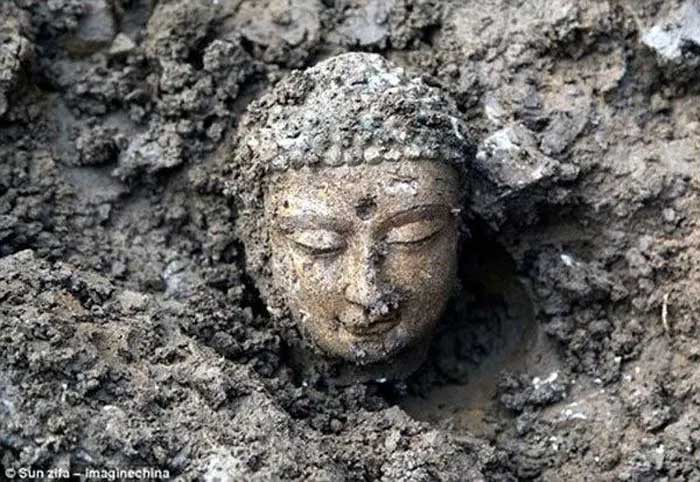Reports from Vientiane indicate that a cache of ancient Buddha statues was recently discovered in Xiengkhuang Province, northern Laos.
Previously, over 200 statues were accidentally uncovered along the Mekong River in Tonpheung District, Bokeo Province. This discovery is welcome news not only for archaeologists but also for the Buddhist community in Laos.

Over 200 statues were accidentally discovered along the Mekong River. (Photo: Image China)
According to Laotian media, during the process of clearing unexploded ordnance from the war, a bomb disposal team stumbled upon a storage area containing 51 small statues in Kherng Village, Phoukoud District, Xiengkhuang Province.
In an interview with Laotian media, Phetsamone Souliyaseng, Deputy Director of the Department of Information, Culture, and Tourism in Xiengkhuang Province, stated that the Buddha statues have been transferred to the village office in Kherng for safe storage and are currently under strict protection.
While there is no precise information yet regarding the age and origin of the statues, authorities believe that they may date back several hundred years. Phetsamone noted that officials from the Ministry of Information, Culture, and Tourism will visit Xiengkhuang Province to inspect the Buddha statues.
Laotian officials have previously discovered ancient Buddha statues in caves, forests, or buried underground throughout the country.
In March 2024, workers repairing a road along the Mekong River in Tonpheung District, Bokeo Province, uncovered the head of a Buddha statue along with several other headless small statues.
After expanding their search, authorities have now found over 200 statues and continue to conduct searches in the area. Most of the statues recovered so far are made of bronze and are all currently housed at Thongthip Phatthanaram Temple in Yaitonpheung Village, Tonpheung District, Bokeo Province.
At this location, the discovered statues will be cataloged and preserved until archaeologists can gather further information about their origin.
Experts believe that the statues found in this area are remnants of temples and stupas that were part of the ancient town of Souvanna Khomkham, which existed 400-500 years ago.


















































